Greyhounds are an extraordinary breed known for their sleek, athletic build and gentle, affectionate nature. These dogs, celebrated for their incredible speed and calm demeanor, make fantastic companions for families and individuals alike. When it comes to raising a Greyhound puppy, providing proper care and training from the beginning is essential to ensure they grow into happy, well-adjusted adults.
Caring for a Greyhound puppy goes beyond just meeting their basic needs. Greyhounds have unique characteristics that require specialized attention, from their nutritional needs to their exercise routines. Their sensitive nature and intelligent personalities mean that training them requires a thoughtful and consistent approach.
In this blog post, you’ll discover the top 10 care and training tips specifically tailored for Greyhound puppies. These insights will help you nurture a healthy, confident, and content pet while building a lifelong bond with your furry friend. Whether you’re a first-time Greyhound owner or looking to enhance your puppy’s upbringing, these tips will guide you in creating the best environment for your loyal companion.
Understanding The Greyhound Puppy: Breed Characteristics and Behavior
Overview of Greyhound Breed Characteristics
Greyhounds are famous for their elegant and athletic build, with a slim, streamlined body designed for speed and agility. Their long legs, deep chest, and narrow waist allow them to reach incredible speeds, making them one of the fastest dog breeds in the world. Despite their athleticism, Greyhounds are known for their calm and gentle temperament. They thrive on affection and are often referred to as “couch potatoes” because of their love for lounging and relaxing.
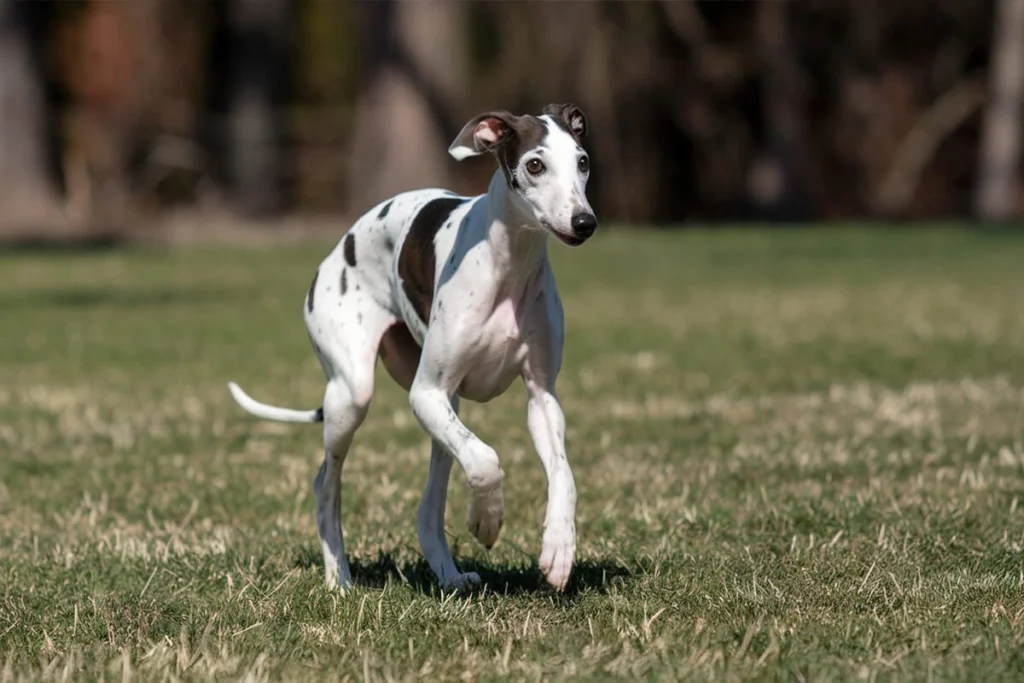
This breed’s intelligence and sensitivity make them easy to train but also require a patient and understanding approach. Greyhounds are generally friendly with people and other animals, but their history as sighthounds means they might have a strong prey drive. Understanding these unique characteristics helps owners better cater to their puppy’s physical and emotional needs.
Common Greyhound Puppy Behaviors
Greyhound puppies are full of energy and curiosity. They often experience short bursts of hyperactivity, commonly referred to as “zoomies,” where they sprint around excitedly before settling down. These energetic moments are normal and indicate that your puppy is happy and healthy.
Greyhound puppies are also playful and enjoy engaging with toys, games, and their owners. They may display a curious nature, exploring their surroundings with enthusiasm. However, due to their sensitive temperament, Greyhound puppies can be shy or hesitant in unfamiliar situations. Early understanding of these behaviors allows you to address them with patience and positive reinforcement, ensuring your puppy feels secure and loved.
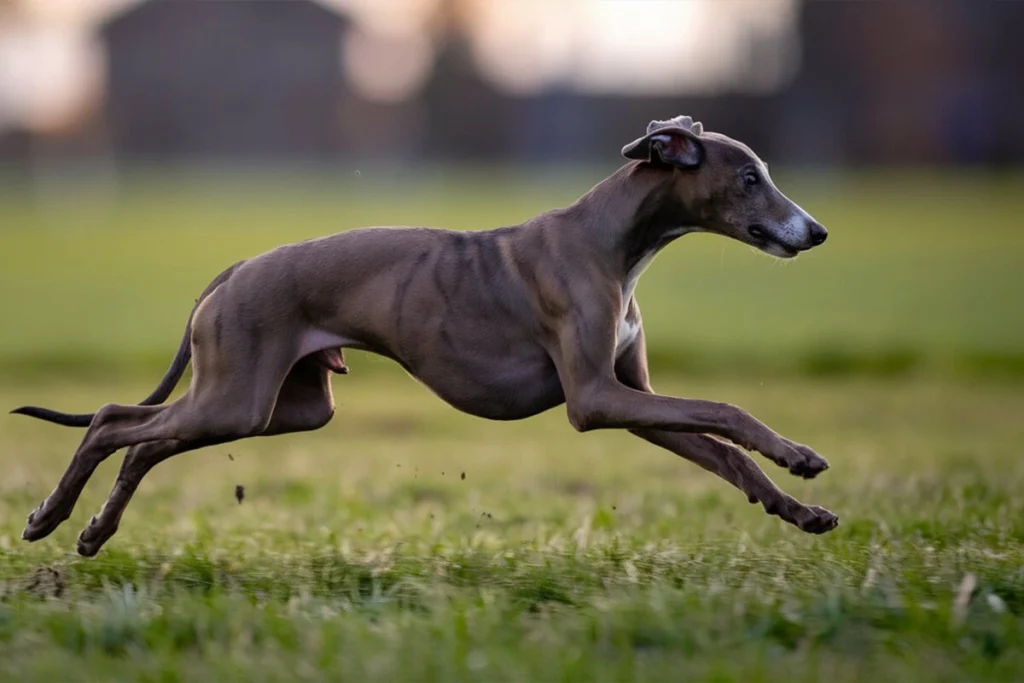
The Importance of Early Socialization for The Greyhound Puppy
Socialization plays a vital role in shaping a Greyhound puppy into a confident and well-adjusted adult dog. Introducing your puppy to a variety of environments, people, and other animals helps reduce fear and anxiety. Start socialization early by exposing your puppy to gentle interactions with friendly dogs and supervised playtime with children.
Incorporate different experiences, such as visits to parks, car rides, and exposure to common household noises like the vacuum cleaner or doorbell. Early socialization helps Greyhound puppies adapt to new experiences, which is essential given their sensitive nature. A well-socialized Greyhound grows into a dog that handles changes with ease and builds stronger connections with their family and community.
By prioritizing socialization alongside understanding their breed traits and common behaviors, you set the stage for your Greyhound puppy to thrive.
Nutrition and Health Care for Your Greyhound Puppy
Choosing the Right Pet Food Brands for Greyhound Puppies
Feeding your Greyhound puppy a high-quality diet is essential for their growth, energy, and overall health. Since Greyhounds are a lean and athletic breed, they require a diet that supports their unique metabolism and physical demands. Pet food brands like Royal Canin and Hill’s Science Diet offer formulas specifically designed for puppies, providing the right balance of protein, fat, and essential nutrients.
When selecting food, look for options tailored to large-breed puppies to ensure their skeletal and muscular development remains on track. Incorporate high-quality protein sources like chicken or lamb to support their active lifestyle. Avoid low-grade fillers and artificial additives that can lead to digestive issues or poor health. Consulting with your veterinarian about the best diet plan ensures your puppy receives the nutrients they need for optimal development.
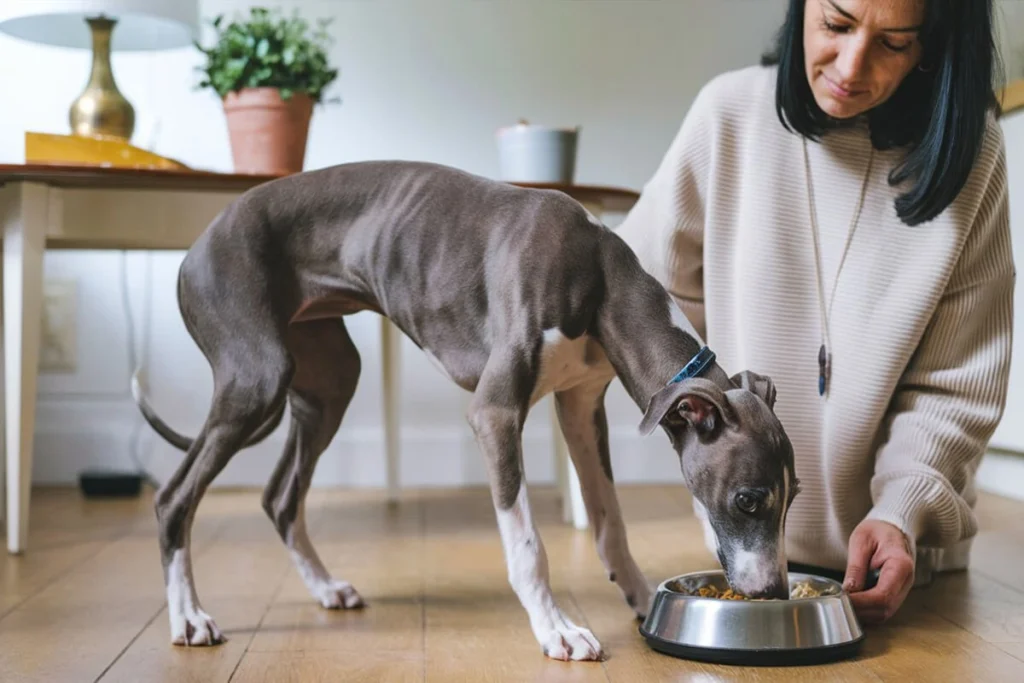
Common Health Concerns in Greyhounds and Prevention Tips
Understanding and addressing common health concerns can help you protect your Greyhound puppy from potential issues. One significant concern is bloat, a life-threatening condition where the stomach fills with gas and twists. To reduce the risk of bloat, feed your puppy smaller, more frequent meals and avoid vigorous activity immediately after eating.
Another common issue is hip dysplasia, a genetic condition where the hip joint doesn’t fit properly into the socket, leading to pain and mobility problems. Providing your puppy with joint-supporting supplements, like glucosamine and chondroitin, can aid in prevention. Regular, low-impact exercises, such as walking, also support healthy joint development.
Keep an eye on your puppy’s weight, as being overweight can exacerbate many health issues. Regular grooming and skin checks help you monitor for conditions like sores or irritations, which Greyhounds can develop due to their thin skin. By staying informed and proactive, you can address these health concerns before they become serious.
Vet Visits, Vaccinations, and Regular Health Check-Ups
Scheduling regular vet visits is one of the most important aspects of keeping your Greyhound puppy healthy. Begin with an initial wellness exam to ensure your puppy is in good health and on track with growth milestones. Your veterinarian will provide a vaccination schedule to protect against diseases like distemper, parvovirus, and rabies. Follow this schedule diligently to maintain your puppy’s immunity.
During these visits, discuss preventative measures for common Greyhound-specific concerns, such as heartworm prevention and dental care. Regular check-ups allow your vet to monitor your puppy’s development and catch potential health issues early.
Establishing a strong relationship with your vet ensures that you have a trusted partner in your puppy’s care. Don’t wait for signs of illness; prioritize wellness visits to keep your Greyhound puppy happy and thriving.
Training a Greyhound Puppy: Techniques for Success
Housebreaking Tips for Greyhound Puppies
Housebreaking a Greyhound puppy requires patience, consistency, and a clear routine. Start by establishing a regular schedule for feeding, potty breaks, and playtime. Puppies thrive on predictability, so take them outside frequently, especially after meals, naps, and play sessions. Use verbal cues like “go potty” or “do your business” while your puppy is outside. Reward them immediately with praise or a small treat when they successfully go in the designated area. Positive reinforcement helps your puppy associate the desired behavior with a pleasant outcome. Avoid punishing accidents, as this can confuse or frighten your puppy. Instead, clean up any messes thoroughly with an enzymatic cleaner to eliminate lingering odors that might attract your puppy to repeat the behavior indoors.
If accidents happen, reflect on your schedule and adjust the frequency of potty breaks. Consistency and attentiveness play a critical role in successfully housebreaking your Greyhound puppy. By staying patient and reinforcing positive behaviors, you can set your puppy up for long-term success.
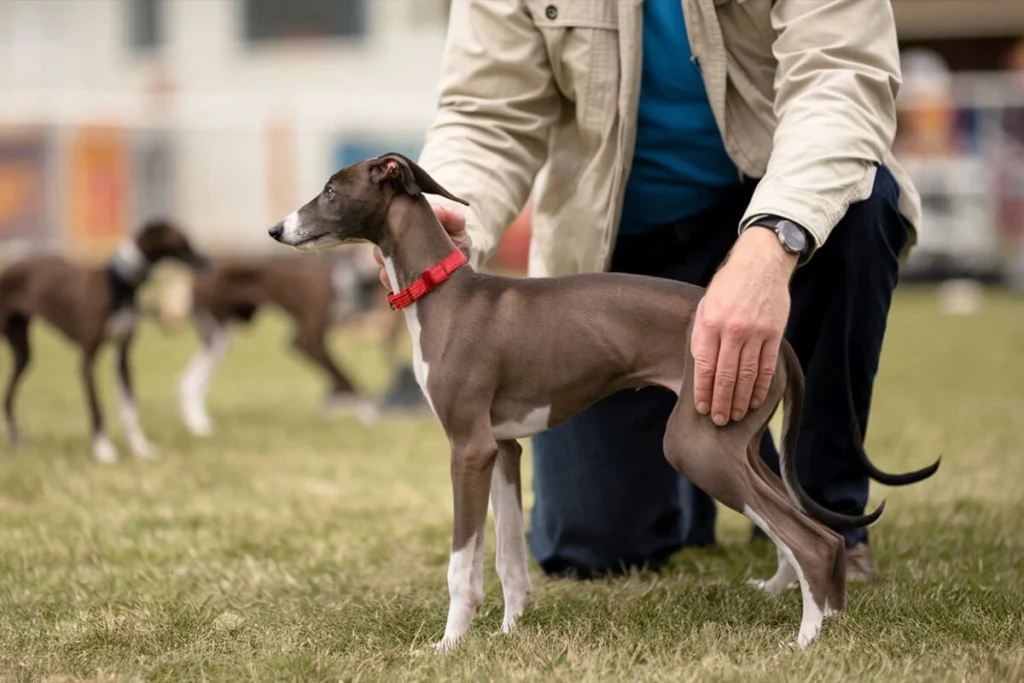
Crate Training for Greyhounds
Crate training provides a safe and comfortable space for your Greyhound puppy while promoting good behavior. Choose a crate large enough for your puppy to stand, turn around, and lie down comfortably but not so big that they can use one corner as a bathroom. Make the crate inviting by adding a soft bed, toys, and a blanket.
Introduce the crate gradually. Encourage your puppy to explore it with the door open, offering treats or toys inside to create positive associations. Start by letting your puppy spend short periods in the crate while you are nearby. Slowly make the time longer as they start to feel more at ease.
Crate training also aids with housebreaking, as dogs naturally avoid soiling their sleeping area. Keep the crate in a central part of your home so your puppy doesn’t feel isolated. Use the crate as a tool for rest and security, not as a form of punishment. Over time, your Greyhound puppy will view the crate as their personal sanctuary.
Effective Dog Training Techniques
Greyhound puppies respond best to training methods that use positive reinforcement and consistency. Reward your puppy with treats, verbal praise, or affection when they display the desired behavior. For example, when teaching basic commands like “sit” or “stay,” reward them immediately after they comply to reinforce the behavior.
Using a clicker can make training more effective. A clicker produces a distinct sound that signals your puppy has performed the correct action. Pair the clicker with a treat or praise to create a strong association. This method works well for teaching commands, tricks, and even leash manners.
Focus on short training sessions to prevent your Greyhound puppy from losing interest or becoming overwhelmed. Keep the training environment distraction-free, especially in the early stages. Avoid harsh corrections or punishment, as Greyhounds are sensitive and may become anxious. By fostering a positive training experience, you can build your puppy’s confidence and strengthen your bond.
Consistency, patience, and encouragement form the foundation of successful training. These techniques not only teach your Greyhound puppy essential skills but also nurture a trusting and loving relationship.
Exercise and Grooming for Greyhound Puppies
Proper Exercise Routines for Greyhound Puppies
Greyhound puppies need balanced exercise routines to support their physical development and overall well-being. While they are a high-energy breed during play, they also tire quickly due to their sprinting nature. Start with short walks, around 10–15 minutes, a few times a day. Walks help your puppy explore their environment, build confidence, and improve leash manners without overexerting their growing joints and muscles.
Incorporate play sessions that allow your puppy to burn off energy while having fun. Engage them with activities like fetch or gentle tug-of-war. Use toys that encourage movement, such as balls or squeaky toys, to keep them entertained and active. If you have a secure yard, let your puppy run freely under supervision for brief periods. Avoid high-impact activities, like jumping or running on hard surfaces, as these can stress your puppy’s developing bones and joints.
Remember to watch for signs of fatigue, such as heavy panting or lying down. Allow your Greyhound puppy to rest when needed, as they require downtime to recover and recharge. By tailoring their exercise routine to their unique needs, you promote healthy growth and help your puppy stay happy and engaged.
Grooming Tips for Greyhounds
Grooming your Greyhound puppy regularly keeps them looking their best and supports their health. Greyhounds have short, smooth coats that require minimal grooming compared to long-haired breeds, but they still benefit from regular care. Use a soft-bristle brush or grooming mitt to remove loose hair and keep their coat shiny. Brushing once or twice a week helps maintain their sleek appearance while promoting healthy skin by stimulating natural oil production.
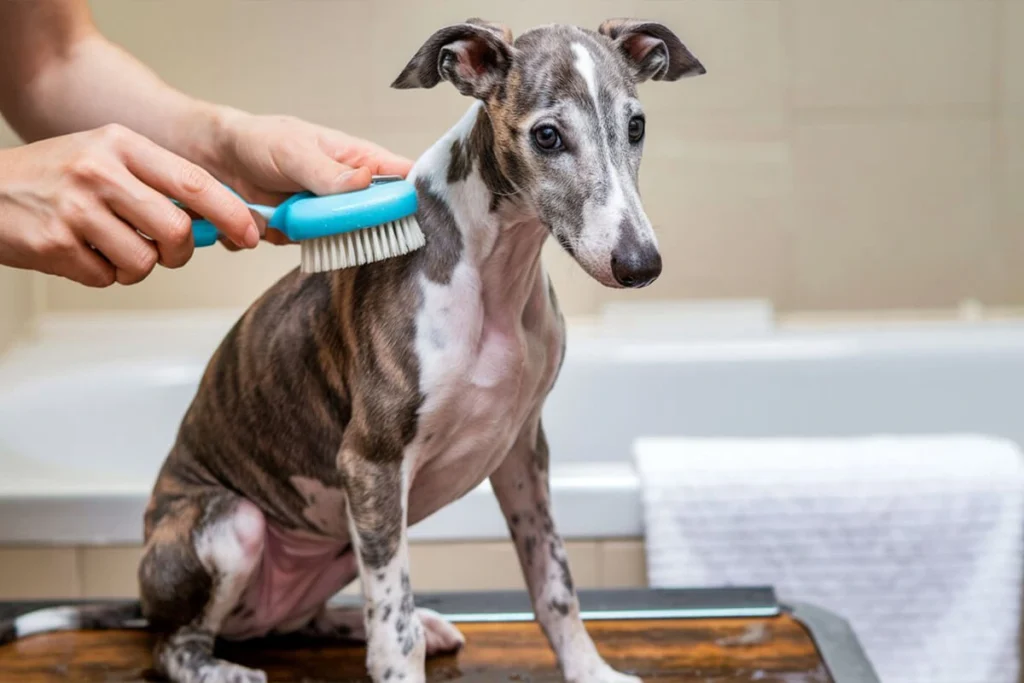
Pay attention to their nails, as Greyhounds grow them quickly. Trim their nails every two to three weeks using a pet-safe nail clipper or grinder. Long nails can cause discomfort or lead to joint strain, so keeping them short is essential for your puppy’s comfort.
Clean your puppy’s ears weekly to prevent wax buildup or infections. Use a cleaning solution for ears that your vet recommends. Carefully wipe the outside of the ear with a cotton ball. Additionally, maintain dental hygiene by brushing their teeth several times a week using dog-safe toothpaste. Regular dental care reduces the risk of gum disease and ensures fresh breath. By making grooming a positive and routine part of your puppy’s care, you keep them comfortable and healthy while strengthening your bond.
Tools to Help Maintain a Greyhound Puppy’s Health and Appearance
Having the right tools on hand makes caring for your Greyhound puppy easier and more effective. For grooming, invest in a soft-bristle brush or grooming mitt to keep their coat smooth and free of loose hair. A nail grinder or clipper ensures you can manage their nail length comfortably without causing stress.
For dental care, stock up on a dog-safe toothbrush and toothpaste, as well as dental chews or toys designed to promote oral health. When cleaning their ears, use a vet-approved ear solution and cotton balls to gently remove dirt and wax buildup.
Collars and harnesses designed for Greyhounds are essential for daily walks and exercise. Greyhounds have slim necks, so a Martingale collar prevents slipping while ensuring a comfortable fit. A well-fitted harness provides added control without putting pressure on your puppy’s neck, which is especially important for leash training.
Finally, keep basic first-aid supplies, such as antiseptic wipes, bandages, and tweezers, for minor injuries or emergencies. These tools help you maintain your puppy’s health and appearance while ensuring they stay safe, comfortable, and happy.
Building a Happy Home for Your Greyhound Puppy
Setting Up a Comfortable Space for Your Greyhound Puppy
Creating a cozy and secure space for your Greyhound puppy is essential for helping them feel at home. Start by selecting a quiet, low-traffic area in your house where your puppy can relax without constant disturbances. Use a crate or a comfortable dog bed as the centerpiece of their space. Crates provide a safe den-like environment, which many Greyhounds naturally enjoy. Choose a crate that is spacious enough for your puppy to stand, turn around, and stretch out comfortably. Line it with a soft bed or blanket to make it inviting and cozy.
If you prefer a bed instead of a crate, opt for one with sufficient padding to cushion your puppy’s slender body. Greyhounds have thin skin and minimal body fat, making a supportive and soft surface crucial for their comfort. Keep toys, chew items, and water nearby to keep your puppy entertained and hydrated in their designated space. Regularly clean and maintain this area to ensure it remains a hygienic and pleasant retreat for your Greyhound puppy.
Socialization Tips to Help Your Puppy Adapt to Different Environments and People
Socialization is critical for raising a well-rounded and confident Greyhound puppy. Expose your puppy to various environments, sights, sounds, and experiences during their early months. Start by introducing them to family members and close friends in a controlled and positive setting. Gradually expand their exposure to other pets, neighbors, and public places, such as parks or pet-friendly stores.
Encourage interactions with people of different ages, genders, and appearances to help your puppy become comfortable in diverse situations. Supervised playdates with other friendly dogs can also boost their social skills. Reward your puppy with treats and praise whenever they approach new situations calmly and positively.
Introduce your puppy to common noises like the vacuum cleaner, doorbell, or car engine in a gentle, non-threatening manner. Gradually increase the intensity of these sounds as your puppy grows more comfortable. By patiently and consistently exposing your Greyhound puppy to different environments and people, you help them adapt to the world with confidence and ease.
Joining Pet Organizations for Support and Resources
Connecting with pet organizations offers invaluable resources and support for raising a healthy and happy Greyhound puppy. Groups like the American Kennel Club (AKC) and Greyhound adoption organizations provide expert guidance on breed-specific care and training. Many of these organizations host events, training sessions, and community meet-ups where you can interact with other Greyhound owners and gain insights into best practices for raising your pet.
If you adopted your puppy through a Greyhound rescue group, stay involved with their community for continued support. These organizations often share information about Greyhound-specific health concerns, training tips, and enrichment activities. You can also find access to breed-specific products, such as specialized collars and coats, through their recommendations.
Joining these groups not only helps you stay informed but also creates opportunities to build connections with other pet owners. Sharing experiences and advice strengthens your ability to provide the best care for your Greyhound puppy while fostering a sense of community.
Conclusion
Raising a Greyhound puppy is an incredibly rewarding experience that requires dedication, patience, and understanding. By focusing on their unique needs and characteristics, you can ensure your puppy grows into a healthy, well-adjusted, and loving companion. From providing proper nutrition and exercise to consistent training and grooming, every effort you make plays a vital role in their development and happiness.
Creating a nurturing environment for your Greyhound puppy means paying attention to their physical, emotional, and social well-being. Socialization helps them become confident and adaptable, while positive reinforcement during training builds trust and strengthens your bond. Establishing a routine for health check-ups and connecting with pet organizations ensures you stay equipped with the resources needed to care for your puppy throughout their life.
Greyhounds bring joy, loyalty, and affection to their families, and the time you invest in their early years will yield a lifetime of companionship and love. Whether you’re a first-time Greyhound owner or an experienced pet parent, following these tips will help you raise a happy and healthy puppy who thrives in your care. Embrace the journey of raising your Greyhound puppy—it’s a partnership that will enrich both your lives for years to come.
What’s the Greyhound Puppy Price And what is the hidden Expenses, Find Out Now.
Learn More about Dogs and Breeds From Here
Find The Some Good Stuff For your Dog Here on PetMD Official
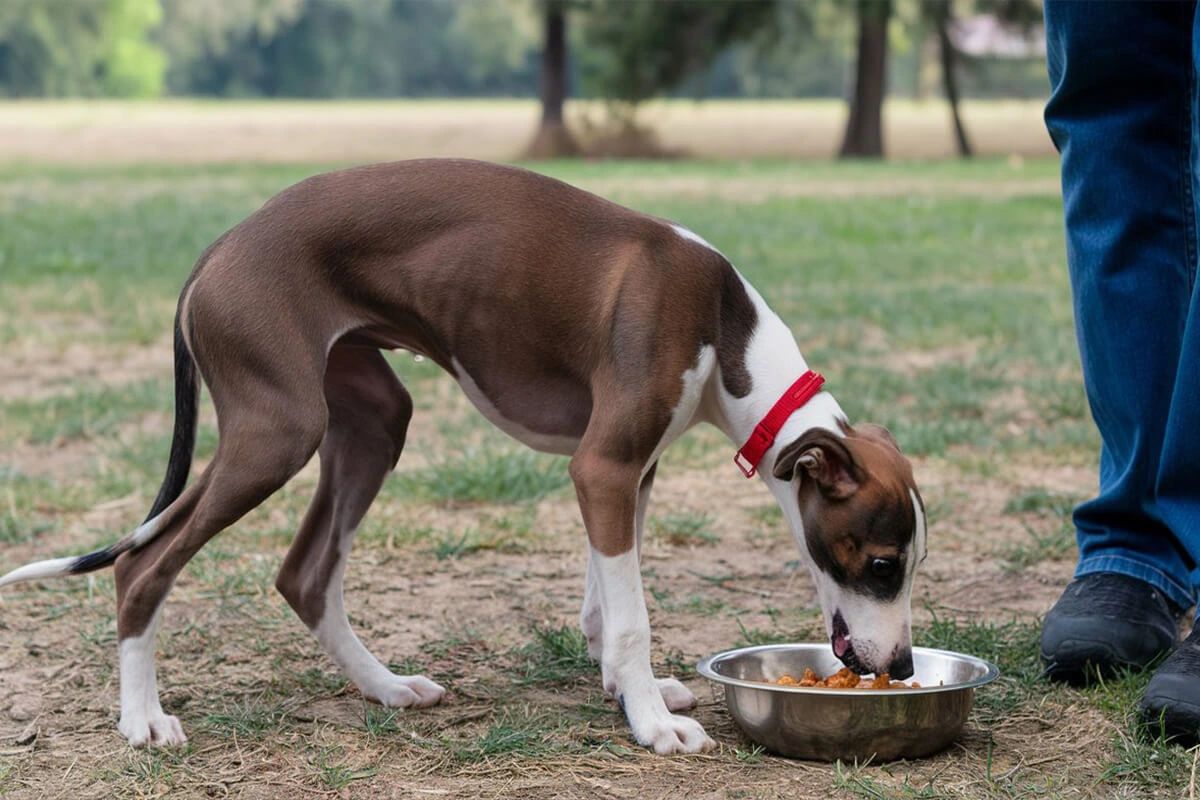
3 thoughts on “Top 10 Greyhound Puppy Care and Training Tips for a Happy Pet”
Comments are closed.